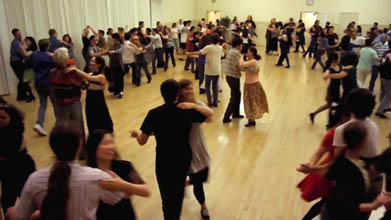
Do It Yourself!
Suggestions for starting your own dance group

Do It Yourself!
Suggestions for starting your own dance group
1) Churches are often a good choice. Some churches rent out a large room, but better yet, many churches sponsor groups that they feel are a benefit to the community. In particular, United Methodist and Unitarian churches often have prioritized community interaction.
Show them this book, to help explain the many ways that a social dance group will be good for the community, and also for the personal growth of the participants. Show them chapters like "Love Thy Neighbor," "Giving," and "The Third Place."
2) Lodges and fraternal organizations tend to have great spaces for dancing, often on the top floor of a downtown building (top floors usually don't have posts). These include the Odd Fellows (IOOF), Elks, Eagles, Shriners, Masonic groups, Lions and local Womens' Clubs. As above, they may sponsor a group that they feel is compatible with their mission or will benefit the community.
3) Dance studios are sometimes affordable, and if so, may be a good place to start because they tend to be small.
4) Local parks and recreations departments often have halls available for rent or possible co-sponsorship with local instructors.
5) YMCA and YWCA groups usually have gym or dance rooms available for charter.
6) Check local ethnic halls. Finnish, Norwegian, Portuguese, Spanish, Irish, Italian, German, Brazilian, Jewish and Italian organizations often have halls available for rent.
7) Local community or junior colleges may have dance halls that they rent out.
8) A good source for larger event locations is Here Comes the Guide. This was originally intended for weddings, but has a good listing of larger danceable halls.